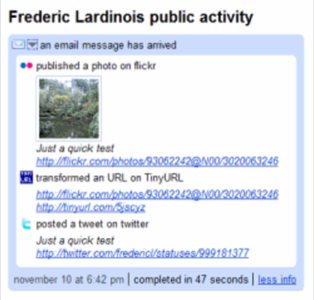Keeping all your social media sites updated can feel like a lot of work sometimes. Services like Pixelpipe or Ping.fm allow you to quickly post messages or media files to various services from one central location, but sometimes you need a more flexible and granular approach. This is where Tarpipe, a Portuguese startup, comes in. Tarpipe allows you to develop complex workflows for publishing content to multiple social media sites through an intuitive, Yahoo Pipes-like interface.

Workflow
The central hub for your work on Tarpipe is the ‘workflows’ tab, which looks a lot like the interface for Yahoo Pipes. The workflow tab allows you to control how, where, and what part of your data will be published. You can, for example, set up Tarpipe to receive an email, turn the title into a Twitter and Plurk post, upload an email attachment to Flickr or PhotoBucket, and then add the URL of that picture to your Twitter message as well, while also saving a copy of your picture on Evernote at the same time. All of this is done through a simple drag-and-drop interface that pretty much explains itself once you start using it.

Supported Services
Among the services currently supported by Tarpipe are Flickr, PhotoBucket, Twitter, Jaiku, Plurk, FriendFeed, TinyURL, and Tumblr. Tarpipe also just announced its integration with Evernote, which allows you to use Evernote’s OCR features to automatically tag pictures.
Most of Tarpipe’s competitors support a wider range of third-party services, but chances are that Tarpipe will continue adding more services over time.
Other Features
Mac users can also make use of Dropipe, a small OSX droplet that connects to Tarpipe and lets you upload pictures directly to the service from your desktop.

Tarpipe is also working on a new feature which will let users publish content on multiple social media sites through the use of a simple form, but without the ability to customize these workflows.
Verdict
Tarpipe is a great alternative to services like Ping.fm or PixelPipe, especially if you want to customize the flow of your data more granularly. Developers can make use of an extensive API, and, as a bonus, Tarpipe also supports OpenID, OAuth, and microformats.
Use case: automatically tag a screenshot using Evernote from Bruno Pedro on Vimeo.
















